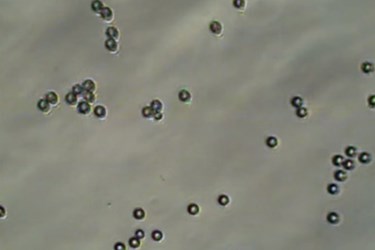Magnetized Nanoparticles Destroy Specific Cancer Cells
By Joel Lindsey

A team of researchers working at Lund University in Sweden is developing a cancer-fighting treatment that uses rotating nanoparticles to destroy cancer cells.
“The clever thing about the technique is that we can target selected cells without harming surrounding tissue,” Erik Renström, a professor involved with the project, said in a news release published recently by the university. “There are many ways to kill cells, but this method is contained and remote-controlled.”
The technique involves inserting magnetized iron oxide nanoparticles into cancerous tumors where they bind to lysosomes, the organelles that keep cells “clean” by destroying foreign substances. Once the nanoparticles are successfully inside cancer cells and after they have bound themselves to lysosomes, they are exposed to a controlled magnetic field that causes the nanoparticles to rotate, inducing programmed cell death. The motion of the nanoparticles causes the lysosomes to destroy the cancer cells.
This nanoparticle technique has so far proven effective in causing cancer cells to “self-destruct,” while also minimizing damage to surrounding tissue. The specificity of the technique makes it far less destructive than alternative methods of cancer treatment.
“Chemotherapy can also affect healthy cells in the body, and it therefore has serious side-effects. Radiotherapy can also affect healthy tissue around the tumor,” said Renström. “Our technique, on the other hand, is able to attack only the tumor cells.”
This project is not the first to attempt using nanoparticles to treat cancer.
In previous nanoparticle research projects, scientists have tried using nanoparticles to generate destructive levels of heat inside cancer cells. Such treatments, however, often led to harmful inflammation in surrounding tissue, according to Lund University’s press release.
While the rotating nanoparticle technique was designed primarily for the treatment of cancer cells, Renström and his colleagues have indicated that it could be used in other forms of medical treatment as well.
“The ability to control the movement of nanoparticles remotely and with high precision would have far-reaching implications in many areas of nanotechnology,” the researchers wrote in their article’s abstract. “Our findings suggest that DMF [dynamic magnetic field] treatment of lysosome-targeted nanoparticles offers a noninvasive tool to induce apoptosis remotely and could serve as an important platform technology for a wide range of biomedical applications.”
A team of researchers from Sweden, Germany, and the United States joined Renström in this project. The results from early testing have recently been published in the journal ACS Nano.
Image Credit: Lund University
